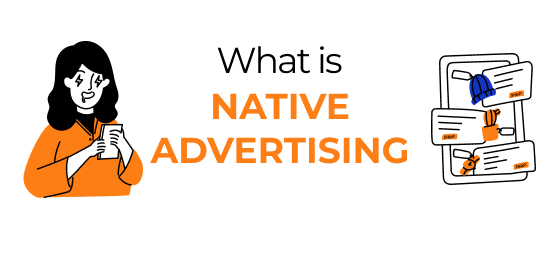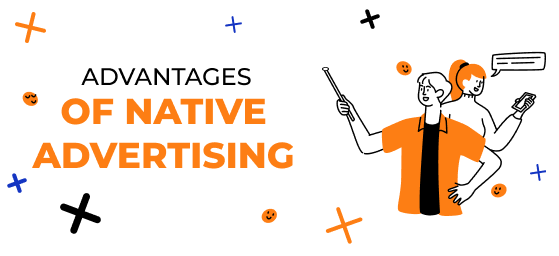
Every day, we are bombarded with advertising. This is not surprising, as advertising is essential for promoting a business, company, or even a blog. However, intrusive or silly advertising can often have the opposite of the desired result. It can alienate potential customers or subscribers. In this article, we will discuss what native advertising is and what its advantages are over traditional.
It is advertising that does not interfere with the user experience. There is no open call to action in such advertising, and its presence in the content looks organic.
Native advertising, unlike traditional, which is often located separately from the main content, for example in banners, to the side of the semantic part of the page, is integrated into the content and must be relevant to the topic.

As mentioned above, native advertising has a number of advantages over traditional one. It has a number of specific advantages over traditional advertising:
Despite all the advantages of native advertising, it has 2 main disadvantages:
In addition, it has a number of problems. It is difficult to call them disadvantages, but such moments can complicate its creation. The first problem faced by creators of native advertising is the loss of authenticity. If the advertising content is not integrated organically, it can cause a negative reaction from the audience, who will feel that they are trying to “sell” advertising under the guise of content.
The development of high-quality content requires careful planning and creative approach. Low-quality content can reduce the effectiveness of the campaign and not attract the right audience. There is also a risk of losing trust from users if it is not transparent about its commercial nature. This can raise ethical issues and negative feedback.
The lack of uniformity of standards in native advertising complicates its evaluation and comparison of results, as there are no unified criteria for assessing effectiveness. In addition, it requires an individual approach to each audience and platform, making it more difficult to scale compared to more standardized forms of advertising.
Each of these types of advertising provides unique opportunities for marketers to create advertising campaigns that better match the content and interests of the target audience, while providing a more natural interaction.
Creating effective advertising requires careful planning and taking into account the basic principles that make this format attractive to the audience. First of all, it is necessary to fully understand the target audience, study their interests, behavior, and preferences in order to adapt the content to their expectations.
It is also important to ensure a natural and relaxed process of integrating advertising with content to create a sense of content integrity. When creating such type of advertising, make it informative and engaging. Conduct testing of different formats and carefully monitor the audience reaction to determine the most effective approach. Following these recommendations, you can not only make native advertising as effective as possible, but also achieve excellent results in marketing campaigns.

These trends suggest that the future of contextual advertising will be closely tied to innovation in technology, deeper personalization, and the desire for more ethical and transparent marketing.
Native advertising is a powerful tool in marketing, providing a more organic and natural interaction with the audience. Its ability to integrate with content while maintaining spontaneity and interest makes this format attractive to advertisers. However, along with the advantages, there are also challenges.
Problems such as the potential loss of authenticity, the difficulty of creating high-quality content, as well as issues of transparency and ethics, require careful attention and management. It is important to note that successful native ad requires flexibility, careful analysis of the target audience, and constant improvement of strategies
It is advertising that fits seamlessly into the content on the page. It looks like part of the content. This type of advertising does not cause rejection among the user, since it does not force the purchase of a product or service, but supports the user experience.
It must be transparent, meaning it clearly states that the element is an advertisement. At the same time, it fits perfectly into the content, be it an article, video or film. The main defining qualities of native ad:
The main difference between native and regular ad is integration into content and complete transparency. If regular ads are most often located in separate banners away from the main content, then native advertising is part of it, often carrying information related to what is presented in the material.